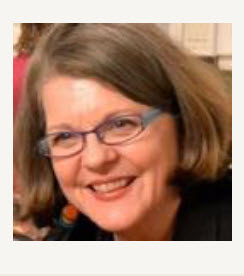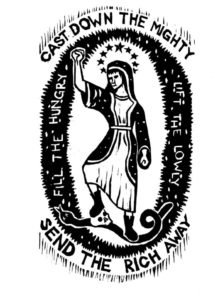The Magnificat: Mary’s Revolutionary Text – a Biblical and Theological Perspective
Not only do we sing! The Outer Cape Chorale also seeks to educate singers and community members about our repertoire. As part of this program, author, singer, and OCC Board VP Kathleen Henry presented “The Magnificat: Mary’s Revolutionary Text – a Biblical and Theological Perspective” to about 40 people in Truro Library on November 14th.
Synopsis of Magnificat Lecture
Kathleen Henry
In the Gospel of Luke, Mary is addressed by an angel who announces to her that she is to bear a child called Emmanuel (which means God with us) even though she is a virgin. This is called the Annunication. Months later, the Magnificat is spoken by Mary to her cousin Elizabeth. The cousins have both experienced “miraculous” pregnancies; barren Elizabeth is pregnant with John the Baptist.
The ancient Song of Hannah–1 Samuel 2:1-10—is a precurser to the Magnificat. Hannah and Mary are both unlikely mothers rejoicing at the birth of an unexpected child. “Each knew to her sorrow that she would have to give up her son one day.” (Hannah’s Song and Mary’s Magnificat, by David Koyzis)
The Magnificat is the longest speech by a woman in the entire Bible—including Hebrew Scripture and Christian Scripture. It is one of the eight most ancient Christian hymns and perhaps the earliest Marian hymn.
Among Protestant groups, the Magnificat may also be sung during worship services, especially in the Advent season during which these verses are traditionally read.
Bach’s Magnificat, the first major liturgical composition on a Latin text by Bach, is built symmetrically around the 7th movement (Fecit potentiam) Between the first and last choruses in D major, Bach creates two symmetrical structures—one laid out around the chorus “Omne generationes” and the other around the alto aria “Esurientes.” These two movements stand a perfect fifth apart from each other, forming one of the most “pure” harmonic relations in music. Then, expanding outward from the chorus in the first half and the aria in the second half, each movement mirrors the other, moving apart by the same intervals. The result is a perfectly balanced and coherent structure that “magnifies” the meaning of the words with musical harmony structure.
Throughout history, people on the margins have identified with the Magnificat and been inspired to believe that God can actually bring liberation to their plight. At least three different countries have banned the public recitation of the Magnificat as being dangerously subversive:
- During the British rule of India, the Magnificat was prohibited from being sung in church.
- In the 1980s, the song had been creating quite the stirring amongst Guatemala’s impoverished masses, inspiring them to believe that change was indeed possible. Their government banned any public recitation of Mary’s words.
- After the Mothers of the Plaza de Mayo—whose children all disappeared during the Dirty War—placed the Magnificat’swords on posters throughout the capital plaza, the military junta of Argentina outlawed any public display of Mary’s song.
 The artist Ben Wildflower says: “She’s a young woman singing a song about toppling rulers from their thrones. She’s a radical who exists within the confines of institutionalized religion,” he said.
The artist Ben Wildflower says: “She’s a young woman singing a song about toppling rulers from their thrones. She’s a radical who exists within the confines of institutionalized religion,” he said.
